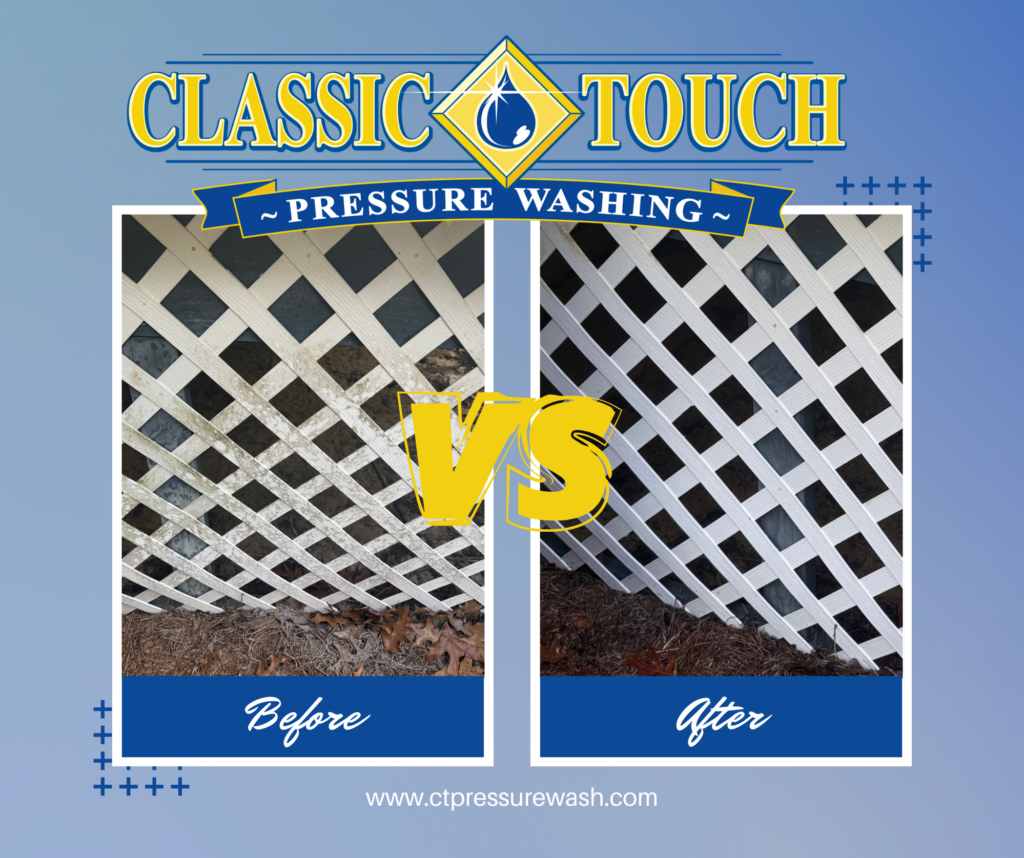Pressure washing is more than just spraying water on surfaces – it’s a precise technique that requires understanding of different surfaces, appropriate pressure levels, and proper cleaning solutions. This guide will help you understand the fundamentals of pressure washing and how to maintain your property effectively.
Understanding Pressure Washing vs. Soft Washing
Pressure Washing
Pressure washing uses high-pressure water streams to remove stubborn dirt and debris. However, not all surfaces can withstand high pressure.
Ideal for:
- Concrete driveways
- Brick pavers
- Stone pathways
- Sturdy deck materials
Soft Washing

Soft washing uses lower pressure combined with specialized cleaning solutions to remove contaminants gently.
Best for:
- Vinyl siding
- Stucco
- Roofs
- Window screens
- Delicate surfaces
The Science Behind Effective Cleaning
Water Pressure Basics
- Light cleaning: 1300-2000 PSI
- General purpose: 2000-2800 PSI
- Heavy-duty cleaning: 2800-3200 PSI
- Industrial use: 3200+ PSI
Temperature Matters
- Cold water: Best for loose dirt and debris
- Hot water: More effective for grease and oil
- Steam: Ideal for sanitization and tough stains
Surface-Specific Guidelines
Concrete Surfaces
- Recommended pressure: 2500-3000 PSI
- Use wide-angle nozzle (25-40 degrees)
- Clean in overlapping strips
- Allow proper drying time before sealing
Wood Decks
- Keep pressure under 1500 PSI
- Maintain 12-inch distance from surface
- Follow wood grain pattern
- Allow 24-48 hours drying time
House Siding
- Vinyl: 1300-1600 PSI
- Stucco: 1500-2000 PSI
- Brick: 2000-2500 PSI
- Always spray at a downward angle
Environmental Considerations
Eco-Friendly Practices
- Use biodegradable cleaners
- Collect and properly dispose of runoff
- Protect plants and vegetation
- Consider water conservation methods
Weather Conditions
Best conditions for pressure washing:
- Clear, sunny day
- Temperature between 50-80°F
- Low humidity
- Minimal wind
Common Mistakes to Avoid
- Using Excessive Pressure
- Can damage surfaces
- May force water behind siding
- Can etch concrete
- Incorrect Nozzle Selection
- Red (0°): Rarely needed, extremely concentrated
- Yellow (15°): Heavy-duty cleaning
- Green (25°): General purpose
- White (40°): Light cleaning
- Black (65°): Soap application
- Neglecting Safety Measures Essential safety gear:
- Safety goggles
- Closed-toe shoes
- Ear protection
- Heavy-duty gloves
Maintenance Schedule Guidelines
Residential Properties
- House exterior: Every 18-24 months
- Driveways: Annually
- Decks: Every 2-3 years
- Roofs: Every 2-4 years
Preventive Tips
- Regular visual inspections
- Prompt stain treatment
- Proper drainage maintenance
- Seasonal cleaning schedules
Understanding Common Contaminants
Organic Growth
- Algae
- Mold
- Mildew
- Moss
Environmental Deposits
- Pollen
- Tree sap
- Bird droppings
- Salt spray (coastal areas)
When to Call Professionals
Consider professional services when:
- Working with heights
- Dealing with delicate surfaces
- Handling stubborn stains
- Lacking proper equipment
- Time constraints exist
Conclusion
Effective pressure washing requires understanding of equipment, techniques, and surface-specific approaches. Whether you’re tackling the project yourself or hiring professionals, this knowledge helps ensure proper maintenance of your property.
